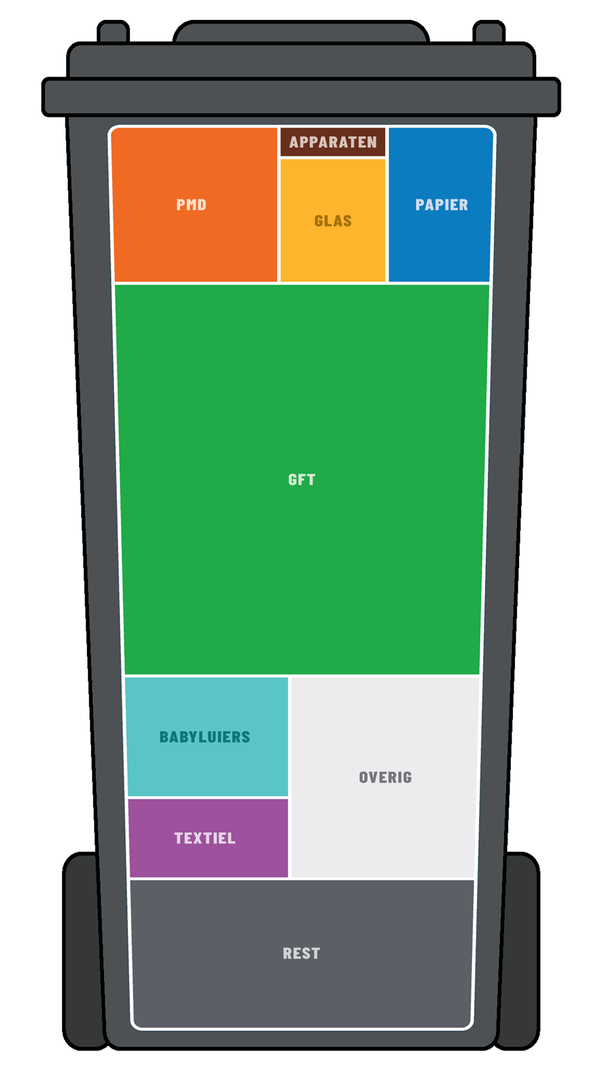In 2023, each person in our region threw away an average of 186 kilos of residual waste. But of this, less than 30 kilos is real residual waste. This means we can recycle much more and reduce our waste mountain. What else can you get out of your residual waste? Here are some simple tips to separate your waste better to contribute to a waste-free and clean region.

GFT: 44% in residual waste
Food waste, fruit, vegetable and garden (VGF) waste accounts for over 40 per cent of our residual waste. Throw it for free with your environmental card in the VGF container or in the VGF container at home. Do you want to use bags? Then only use compostable bags with the Kiemplant logo or OK-compost logo. This allows us to make compost, which in turn is good for our gardens and agriculture.
Pmd: 8% in residual waste*
Plastic packaging, metal packaging and drink cartons (pmd) make up 8% of our residual waste. Throw these separately in the pmd container. This ensures that these materials can be properly recycled.
*Please note: How you dispose of your pmd depends on where you live. Residents of high-rise and low-rise houses without a pmd container can dispose of pmd and residual waste together in a collection container for residual waste in the neighbourhood. This waste is collected separately and later sorted by machines.
Appliances: 1% in residual waste
Still 1% of appliances disappear into residual waste. You can do better! Hand in anything with a plug or battery for free at the environmental centre, DIY store or shop where you buy a new appliance. These appliances can often be repaired or recycled, saving valuable resources.
Glass: 4% in residual waste
About 4% of our residual waste consists of glass. Make sure packaging glass, such as bottles and jars, end up in the bottle bank with cap or lid. Glass is endlessly recyclable and need never end up in the residual waste.
Paper: 5% in residual waste
Paper and cardboard still make up 5% of our residual waste. Make sure clean and dry paper and cardboard end up in the paper container. Paper is excellent for recycling, which means fewer trees need to be cut down.
Baby nappies: 6% in residual waste
Baby nappies make up 6% of our residual waste. You can dispose of used nappies free of charge at the environmental centre with special nappy bags available there. Even better is to use washable nappies, which are not only more environmentally friendly but also cost-saving.
Textiles: 4% in residual waste
Textiles also make up 4% of residual waste. Clean, dry, good, worn or broken textiles belong neatly packed in the textile container. This ensures that the textiles can be reused or recycled.
Other reusable: 12% in residual waste
As much as 12% of residual waste consists of reusable raw materials such as small chemical waste, hard plastics, metal, polystyrene foam and deep-frying fat. Hand in these separately and free of charge with your environmental card at the waste disposal site to enable recycling.
Residual waste: 16% in the residual waste container
Separate your waste and raw materials properly, then little residual waste will remain. This is better for the environment and your wallet.
Unsure where your waste belongs?
Download the handy separation guide. Or use the separation guide on the website or in the Waardlanden app.
By properly separating and recycling our waste, we make our region cleaner and more sustainable. Get involved and get even more out of your residual waste. Good for the environment and your wallet!
For more tips, visit waardlanden.nl/tips







